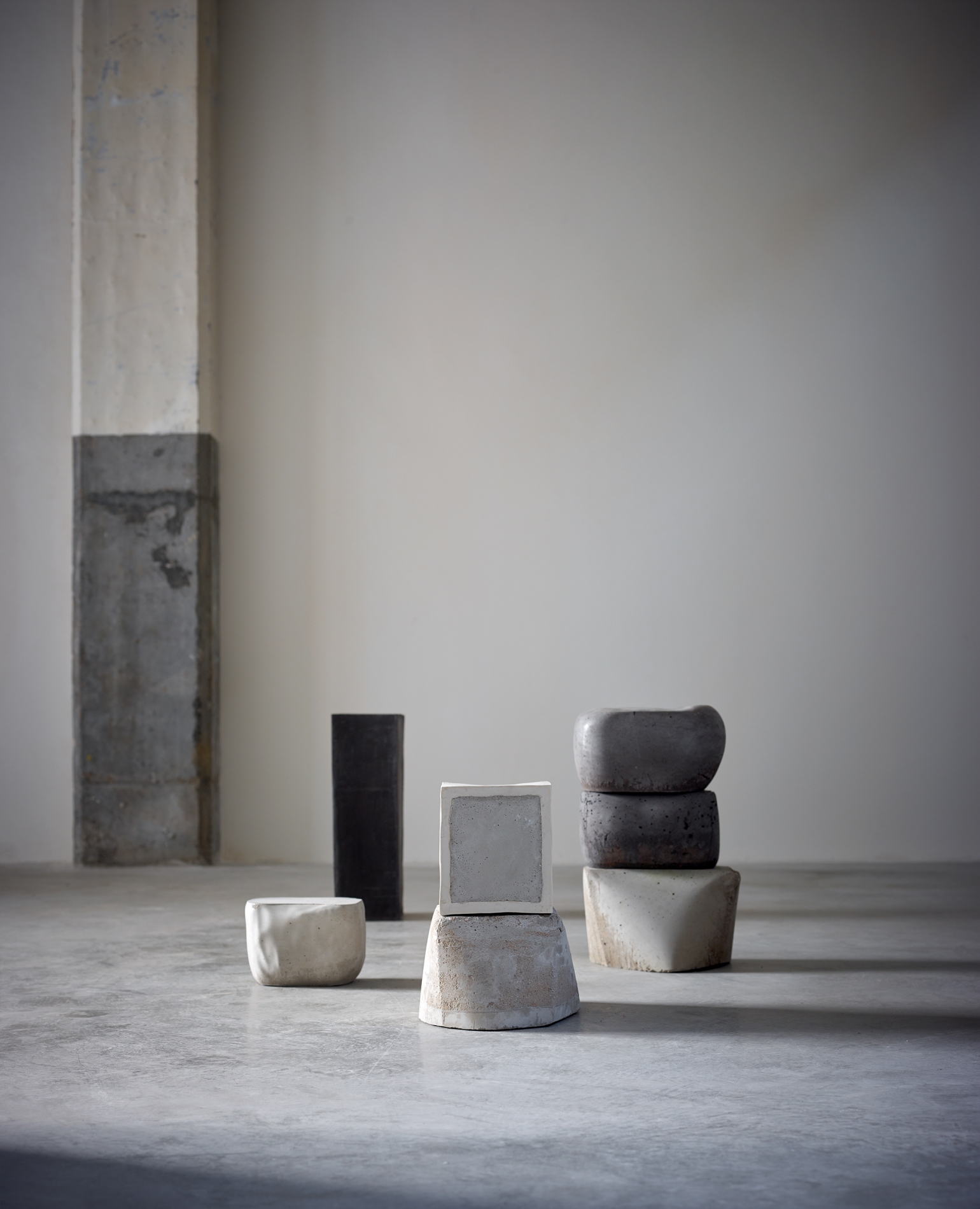"I Like When Materials and Shapes React, Speak and Exist." - An Interview with Lucia Bru

Sculpture is one of Lucia Bru’s creative activities, where she questions our knowledge and perception of materials such as stone, glass, cement. In the artist's hands, they turn into objects of a deceptive appearance: made from cold and invulnerable matter and turned into unexpectedly delicate, tender, enticing and fragile forms.
LB: At first, there is experimentation and time for research and observation. These moments are very important in order to discover new possibilities, define avenues for exploration and choose the way forward... Often I create a frame around it (both materially and conceptually). Some elements escape and leave the frame. There are things that I cannot control, they live their own life and I love these moments, they are part of the process. I like when materials and shapes react, speak and exist. Shapes and materials are bodies in space, they allow me to experiment with their environment. So to answer your question: I don't improvise, I just guide and it's the materials and shapes that come alive and choose. The physical confrontation between my body and materials and space is essential to how I work. I like having my sculptures and drawings be present in places, letting them slip in gently without restricting or transforming the space itself. To be one with the place and to reveal the space.
==
LB: Au départ, il y a l’expérimentation, les périodes de recherches et d’observations. Ces moments sont très importants pour découvrir les nouvelles possibilités, définir les champs à explorer, choisir les moyens,… Souvent je pose un cadre de travail (tant matériel que conceptuel) Certains éléments m’échappent, sortent du cadre, il subsite des points sur lesquels je n’ai pas le contrôle, je conserve ces moments. j’aime quand les matériaux, les formes réagissent, parlent et sont. Les formes et les matériaux sont des corps dans l’espace, ils me permettent d’expérimenter les lieux. Donc pour répondre à votre question, je n’improvise pas, j’oriente et ce sont les matériaux et les formes qui s’animent et choisissent. La confrontation physique de mon corps aux matériaux et aux espaces est primordiale dans le processus de mon travail. J’aime faire apparaître mes sculptures et dessins dans les lieux, les glisser doucement sans contraindre et sans transformer les lieux. Être avec les lieux, révéler l’espace.

Untitled. Porceain and sandstone. 2017. © Jan Liegeois. Photo courtesy Axel Vervoordt Gallery

(aérocubes) paper and rough porselaine. Dimensions : 199 x 188 x 211 cm. 2017. © Jan Liegeois. Photo courtesy Axel Vervoordt Gallery

(pleins) cement and porcelain 39,5 x 28 x 19 cm. 2017. © Jan Liegeois. Photo courtesy Axel Vervoordt Gallery
AD: You always produce your sculptures yourself in order to be in contact with material and to be able to make all decisions during the creative process. How do you feel about a completely different approach, when artists have teams of workers who produce art under their supervision? Can you think of yourself working like this?LB: Of course it’s very different working with assistants (in a team) or even working with companies on a project. Depending on the nature of the work, artistic choices may be different. It depends on who we are, what we are looking for. Every artist has their own way of working. For me, sculpture is the result of the direct confrontation between my body and my ideas about the outside world, space and places. For certain projects, because of their scale, I have had help. So I have assistants work with me on occasion but they can't help me with every detail…
==
LB: Bien sûr c’est très différent de travailler avec des assistants (en équipe) ou bien même de travailler avec des entreprises pour réaliser les projets. Selon la nature des projets, les choix artistiques peuvent s’orienter différemment. Ça dépend de qui on est, de ce que l’on cherche. Chaque artiste a son mode de fonctionnement. Pour moi la sculpture est le résultat d’une confrontation directe de mon corps et de mes idées au monde extérieur, à l’espace, aux lieux. Dans certaines circonstances par rapport à des problèmes d’échelles, de projets spécifiques ça m’est déjà arrivée de me faire aider. J’ai des assistants ponctuels, ils ne peuvent pas m’aider sur tous les gestes …
==
LB: Ce qui est important c’est pouvoir continuer à penser des espaces et modeler le temps. Réaliser des projets, les partager.
I can observe architecture, dance, nature and everyday life forever... Pompeii, Petra, Aswan, Mesquita de Cordoba, New York, Naples, the desert, the sea…
==
LB: Nous créons des espaces, nous les habitons, ils nous déterminent. Nous traversons les espaces et les espaces nous traversent. L’observation des corps habitant les espaces me parle beaucoup. L’architecture, la danse, la nature , la vie quotidienne sont pour moi des sources d’observation infinies. Pompéi, Petra, Assouan, la Mesquita de Cordoba, New-York, Naples le désert, la mer, …

(movidas) Saint-Louis crystal 15 x 20 x 15 cm. 2017. © Jan Liegeois. Photo courtesy Axel Vervoordt Gallery

(aérocubes) Saint-Louis crystal, grey cement 15,5 x 21 x 14 cm. 2017. © Jan Liegeois. Photo courtesy Axel Vervoordt Gallery

(stretch) graphite, ballpoint pen with black ink on tracing paper 200 x 150 cm. 2017. © Jan Liegeois. Photo courtesy Axel Vervoordt Gallery
AD: What is your favourite art movement or art period?==
LB: Communicate and share research methodologies. Learn to learn. Be a guide. Encourage research and experimentation : develop self-questioning, adventure, the unknown. Give priority to the laboratory.
